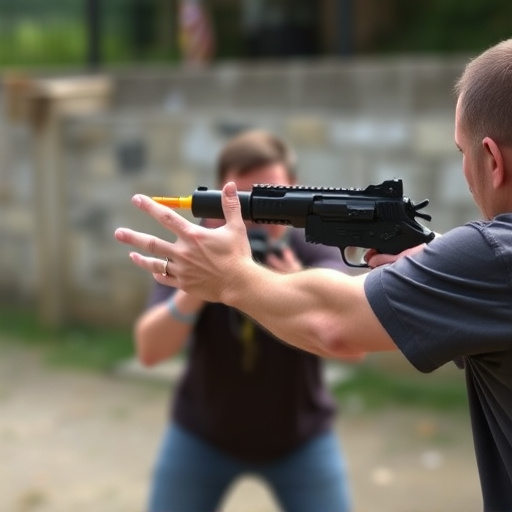Stun guns, marketed as non-lethal self-defense tools, pose severe risks to individuals with heart conditions due to their electric current delivery. The shock can trigger irregular heartbeats and potentially fatal cardiac arrest, especially in vulnerable patients. Users with known heart issues should explore safer alternatives like pepper spray, martial arts training, or consulting healthcare providers before considering a stun gun.
A stun gun, designed to immobilize through electric shock, may seem like a viable self-defense option. However, its effectiveness is coupled with significant risks, especially for heart patients. This article delves into the intricate details of stun guns, focusing on their mechanism and impact on cardiac health. We explore the peculiar risks these devices pose to cardiovascular systems, highlighting the need for caution. Additionally, alternatives and safety measures are discussed to empower users with informed choices regarding personal safety while mitigating potential hazards, particularly for those with pre-existing heart conditions.
- Stun Gun Mechanism and Heart Function
- Risks Associated with Stun Guns for Heart Patients
- Alternatives and Safety Measures
Stun Gun Mechanism and Heart Function

Stun guns, also known as electronic control devices (ECDs), operate by delivering a powerful electric shock to disrupt an individual’s muscular control and cause temporary incapacitation. The mechanism involves firing two thin metal probes into the target, which are connected to high-voltage, low-amperage electrical circuits. These probes penetrate the skin and deliver an electric current that overloads the nervous system, causing muscle spasms and loss of balance. While stun guns have been marketed as non-lethal weapons, they can still pose significant risks, especially for individuals with pre-existing heart conditions.
One of the critical aspects to consider regarding stun gun effectiveness and safety is their impact on heart function. The electric shock can lead to a range of cardiac effects, particularly in those with cardiovascular diseases or arrhythmias. In some cases, it may trigger an irregular heartbeat, causing palpitations or even more severe conditions like ventricular fibrillation. This risk is heightened for heart patients as any disruption in cardiac rhythm could be dangerous and potentially life-threatening. Therefore, stun gun risks for heart patients should be a significant concern, prompting careful consideration of their use and highlighting the need for alternative non-lethal force options.
Risks Associated with Stun Guns for Heart Patients

Stun guns, while marketed as non-lethal self-defense tools, pose significant risks to individuals with heart conditions or cardiovascular diseases. The electric shock delivered by a stun gun can cause various adverse effects, especially in heart patients, who are already more susceptible to irregular heartbeat and cardiac arrest. Studies have shown that the sudden jolt of electricity can trigger ventricular arrhythmias, leading to potentially dangerous and sometimes fatal heart rhythms.
For individuals with known heart problems, the use of a stun gun could exacerbate their condition or even lead to sudden cardiac death. The risk increases when the device is used improperly or in unexpected ways, such as when the target moves suddenly during the shock. Therefore, it’s crucial for users and potential buyers, especially those with underlying heart conditions, to understand the risks and consult medical professionals before considering a stun gun as a means of self-defense.
Alternatives and Safety Measures

Stun guns, while effective as personal defense tools, are not without risks, especially for individuals with pre-existing health conditions like heart problems. The electric current delivered by a stun gun can pose significant dangers to heart patients due to potential disruptions in cardiac rhythm and blood pressure. In some cases, it may even trigger a sudden cardiac arrest.
As such, it’s crucial for users with known heart conditions to explore alternatives or consult their healthcare providers before considering the use of a stun gun. Non-lethal self-defense options like pepper spray, personal alarms, or training in martial arts or avoidance tactics can be more suitable and safer choices. Additionally, safety measures should include regular medical check-ups to monitor any adverse effects related to stun gun usage and ensuring that family members or close associates are aware of the potential risks associated with these devices.
While stun guns can be effective as a non-lethal self-defense tool, it’s crucial to understand their potential risks, especially for heart patients. The impact of a stun gun on the body, particularly its electrical current, can pose significant dangers to those with pre-existing cardiac conditions. In light of these Stun Gun Risks for Heart Patients, alternative self-defense methods and stringent safety measures should be considered to prevent severe health complications. Always consult with medical professionals before considering any tool that could affect the heart’s function.
